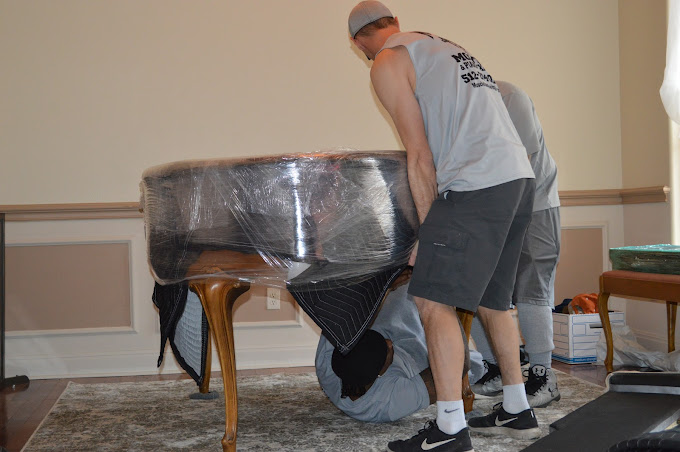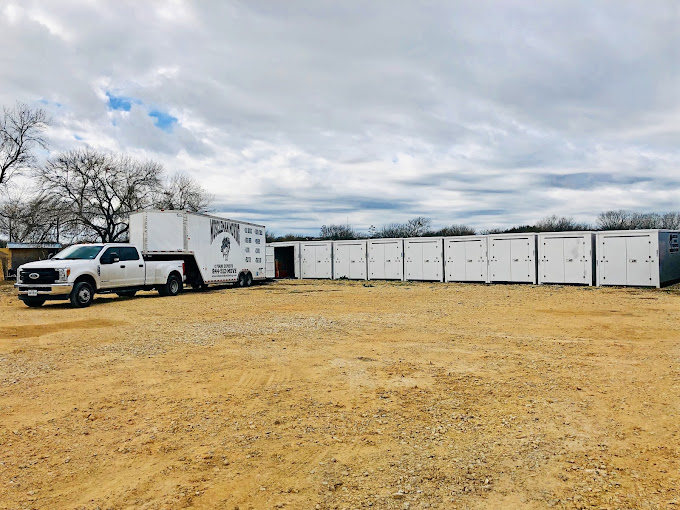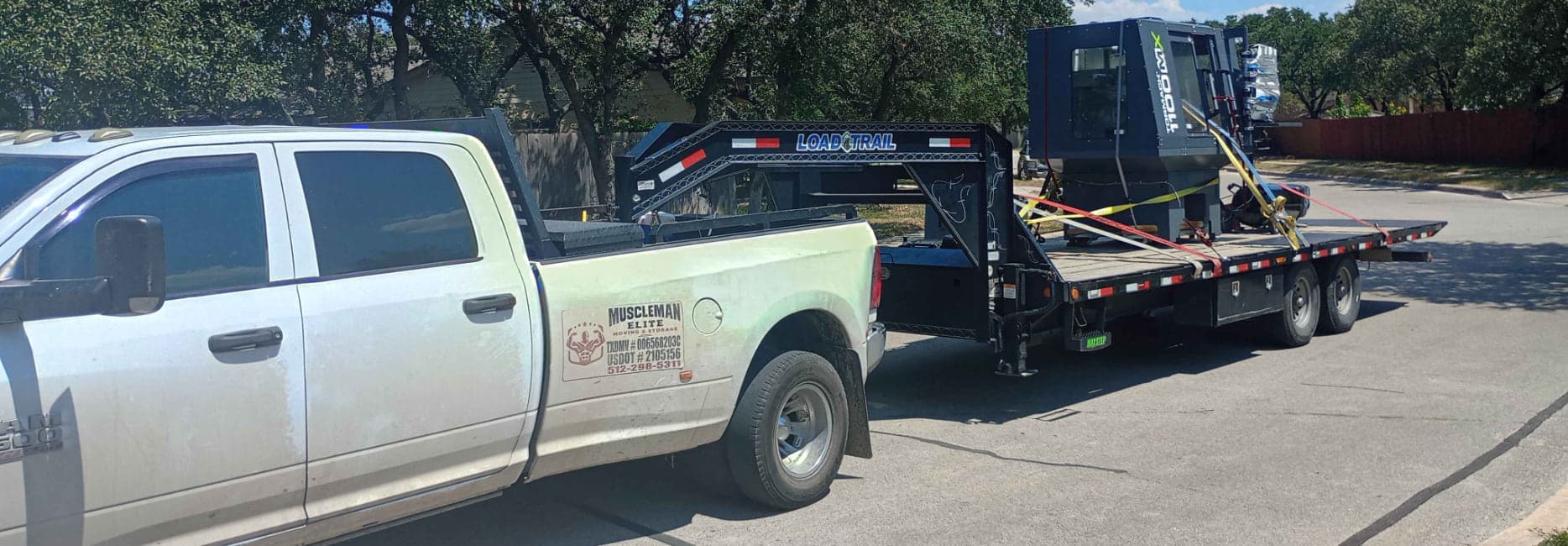The Ultimate Guide for Safely Packing Fragile Items for Your Dripping Springs, TX Move
Published on Mar 5, 2025
•11 min read
By Mike Stackable,Founder

Packing fragile items requires extra care to ensure they arrive at your new home in one piece. Without the right techniques, delicate belongings like glassware, dishes, and electronics can easily get damaged during the move. Whether relocating across town or preparing for a big move in Dripping Springs, TX, using quality packing materials, wrapping items properly, and securing boxes correctly can make all the difference in keeping everything safe. With a little planning and attention to detail, you can prevent breakage and make unpacking much easier. In this guide, Muscleman Elite shares tips for safely packing fragile items and protecting your valuables throughout the moving process.

Choosing the Right Packing Materials
Choosing the right packing materials is essential to protect fragile items during a Dripping Springs, TX move. Proper materials cushion your belongings from shocks and impacts while keeping boxes sturdy during transit. Think of packing as building a protective shield around your valuables, with each layer playing an important role. Picking the right materials makes all the difference.
Essential Packing Materials
Start with bubble wrap, the go-to packing material for protecting your items. Its air-filled pockets absorb shocks and reduce the risk of breakage if boxes are dropped or shaken. For fragile items, use multiple layers of bubble wrap to ensure extra protection.
Next, packing paper is an excellent choice for wrapping various items. It helps prevent scratches and cushions and protects against minor impacts during transport.
Always use sturdy ones that can handle weight and rough handling without collapsing when choosing boxes. Double-walled boxes are ideal for heavier items, offering extra strength and protection.
Types of Packing Materials to Use
- Bubble Wrap: Provides excellent cushioning against shocks.
- Packing Paper: Ideal for wrapping delicate items and reducing scratches.
- Foam Peanuts: Lightweight fillers that fill voids in boxes.
- Sturdy Boxes: Essential for durable containment of all items.
- Packing Tape: Ensure secure sealing so boxes stay closed during movement.
- Markers: Useful for labeling contents for easy identification.
It's important to not only have these materials but also to ensure they are high quality.
Why Quality Matters
An American Moving & Storage Association study found that around 25% of moving damages are caused by poor-quality packing materials. Taking the time to pack carefully won’t help if the supplies you use aren’t up to the job. Using high-quality packing materials can prevent damage and save you money in the long run.
Where to Buy
Check out local hardware stores or moving supply shops for high-quality packing materials. Online options like Amazon and U-Haul are also great, offering convenience and helpful customer reviews to guide your purchase.
Once you’ve got the right packing materials, you can tackle the following steps to ensure all your delicate items arrive safely at their destination.
Best Techniques for Wrapping Delicate Items
How you wrap fragile items plays a big role in keeping them safe during a Dripping Springs move. Taking the time to do it right ensures your valuable belongings stay protected. Start by setting up a clean, flat workspace. This gives you easy access to your supplies and helps you stay organized while wrapping each item.
Step-by-Step Guide
The right method can make all the difference when wrapping fragile items. Start by wrapping each item individually to keep them from contacting one another. This way, if one item shifts during transit, the rest stay protected. Bubble wrap works best for cushioning, but packing paper is also helpful for preventing scratches when glass or ceramic pieces touch other surfaces.
Wrapping Glassware
Now focus on glassware, which needs extra care when packing. A simple and effective method is to stuff crumpled packing paper into the hollow centers of glasses before wrapping the outside. This helps absorb shocks during transit and protects the edges from chips or cracks. When placing glasses in a box, always create a buffer between them—use cardboard dividers for stemware if you have them. Also, layer carefully when packing glassware and other items in the same box to keep everything safe.
Layering is Key
Use soft materials like towels or bubble wrap to add extra protection and prevent movement inside the box. Start packing with a layer of padding at the bottom, then place heavier items first and lighter ones on top. This helps keep everything stable and protects items from impacts.
Avoid using airtight boxes while packing. Leaving a little room, combined with cushioning materials, allows for slight shifting while keeping items secure. Check how tightly packed each box is to prevent excessive movement during transport.
By following these wrapping techniques, you can pack fragile items efficiently and reduce the risk of damage. This also makes unpacking more organized in your new Dripping Springs home. Once you’ve mastered wrapping, choose sturdy containers to transport delicate belongings safely.
Selecting the Ideal Box
Not all moving boxes are the same, and choosing the right ones can make a big difference. The right box can help ensure your belongings arrive safely, while the wrong ones can lead to broken items. Knowing the types of boxes and their uses will help you pack more efficiently.
Types of Boxes
When choosing boxes, size and type are important. Use smaller boxes for heavy items like books or kitchen appliances to prevent the contents from shifting and getting damaged during transit. It’s like carrying groceries—several small bags are easier to handle than one big, overpacked box.
Larger boxes work best for lighter, bulkier items like pillows, bedding, or stuffed toys. They let you pack these soft items together without damaging them. For fragile items like glassware and dishes, use dish-pack boxes with compartments designed to keep each piece safe and secure, reducing the risk of breakage.
Consider Box Strength
Not every box is made from the same material. Opting for double-walled boxes ensures you take an extra step to protect your valuables. According to studies conducted by the Moving Organization, double-walled boxes reduce the risk of compression damage by 45% compared to single-walled models. This added strength becomes crucial when multiple boxes are stacked upon each other during transit, a common scenario in moving trucks.
It’s also smart to check the box's Edge Crush Test (ECT) rating before purchasing. A box with a 32 ECT rating is commonly adequate for standard items, but for heavier possessions, consider upgrading to 44 ECT-rated options, which provide additional security against crushing.
As you prepare for moving day, here are a few recommendations on box selection to optimize protection:
- Avoid Flimsy Materials: Always choose thick and sturdy materials over flimsy ones to avoid any risk of breakage.
- Reinforce with Tape: Don’t hesitate to use extra tape on the bottoms of your boxes; this reaffirms their strength and reliability.
- Use Proper Sizing: Aim for box dimensions that minimize excess movement but still comfortably fit your items—generally between 12x12x12 inches and 18x18x18 inches for fragile goods.
Ensure your chosen boxes are sturdy enough to handle their weight without collapsing under pressure. Picking the right boxes and knowing their limits will greatly improve the chances of your fragile items safely making it through the trip.
Efficiently Packing Your Moving Box
Packaging fragile items is about finding that sweet balance between maximizing space and providing adequate protection. A well-packed box will protect your belongings and make the entire process smoother as you navigate the chaos of moving.
Layering Items
Start your packing process with the bottom layer, a cushioning foundation made from soft materials such as towels or bubble wrap. This layer acts like a safety net for your most delicate items, absorbing shocks during transport. Imagine placing a cherished vase on top of a soft bed—it’s far less likely to break than sitting directly on a hard surface.
After establishing that protective base, it's time to build your middle layer. This is where the rule of weight distribution comes into play: heavier items need to go at the bottom while lighter items should sit on top. Think of it like stacking books; if you put the lightest book on the bottom, it'll topple over quickly. Ensure you're arranging things so that each item supports the others without excessive weight that could cause undue pressure.
As you reach the final stage, add another gentle top layer of cushioning before sealing the box. This extra measure provides one last barrier against any unforeseen bumps during transit.
Optimize Space
Once you've mastered layering, it's time to focus on making the most of your box space. A helpful tip is to use smaller boxes for heavier items. Smaller boxes are easier to handle, reduce shifting, and lower the risk of damage during transport.
Fill empty spaces with packing peanuts or foam inserts to protect your belongings even more. This prevents items from moving around and provides extra cushioning against impacts.
These simple packing tips will help keep your fragile items safe and organized. Once packed, the next step is ensuring your boxes are secure for safe transport.
Securing Boxes for Safe Transport
Securing your boxes properly is the key to ensuring your fragile items arrive safely. Many people think a single piece of tape will be enough, but keeping your cherished vases or glassware intact takes more care. Paying attention to how you seal your boxes is important to avoid damage during transit.
Taping Techniques
To securely tape boxes, reinforce the bottom seams with a cross-tape pattern. Apply tape strips horizontally and vertically across the base to create a strong foundation that helps distribute weight and pressure.
For heavier boxes, add multiple layers of tape. Depending on the weight, use three to four layers to keep the box intact, especially during long-distance moves or rough handling. This added step can make a big difference.
Labeling
Using the right tape is important, but clear labeling is just as crucial for protecting fragile items. Mark your boxes with "Fragile" on all sides using a bold marker to remind anyone handling them—movers or family members—to be extra careful. After all, it’s easy to overlook delicate items when rushing through tasks. A clear label ensures fragile contents get the attention they need.
Focusing on secure sealing and clear labeling protects your valuables and improves communication with anyone helping you. With some preparation, you can ensure your breakables stay safe and sound throughout the moving process.
Storing Breakables for Long-Distance Dripping Springs Moves
Proper storage is essential to keep delicate items safe during transit. Using climate-controlled storage can make a significant difference. These units keep the temperature and humidity stable, protecting fragile items like glassware or ceramics from damage caused by sudden temperature changes.
For example, extreme heat can cause vases to crack or warp, and too much moisture can lead to mold growing on furniture.
Extra Padding
In addition to choosing the right storage unit, extra padding and protective materials can provide added security. Wrap items in bubble wrap or blankets before packing them into boxes for additional cushioning. This also helps prevent any scratches or chips during handling.
Once you’ve secured climate protection and added padding, the next step is to place the items within your moving truck strategically.
Strategic Placement
Positioning breakables correctly is crucial when loading them into the vehicle. As a rule of thumb, always place these items in the truck's center surrounded by sturdier objects like furniture or boxes containing non-fragile items, which act as protective barriers against impacts from every direction.
By systematically taking care of each component, you're preventing immediate damage and preserving the sentimental value of these cherished possessions for years to come.

Moving can be stressful and challenging, but taking extra care while packing and securing your fragile items can make all the difference. By layering items, optimizing space, securing boxes with proper taping techniques, and considering climate-controlled storage for long-distance moves, you can ensure your breakables stay safe throughout the moving process. With these tips, you can enjoy peace of mind knowing that your cherished belongings are well-protected during this transitional period. So take your time, pack carefully, and prepare to enjoy your new Dripping Springs home without any added stress or worry about damaged items. Contact Muscleman Elitefor expert advice and assistance with your next move. They specialize in packing and safely transporting fragile items, making your move a breeze.

Ready for a Smooth Move?
Let's Get Started.
Ready for a Smooth Move?
Let's Get Started.
We'll give you an exact quote in minutes. No pressure. No surprises.
